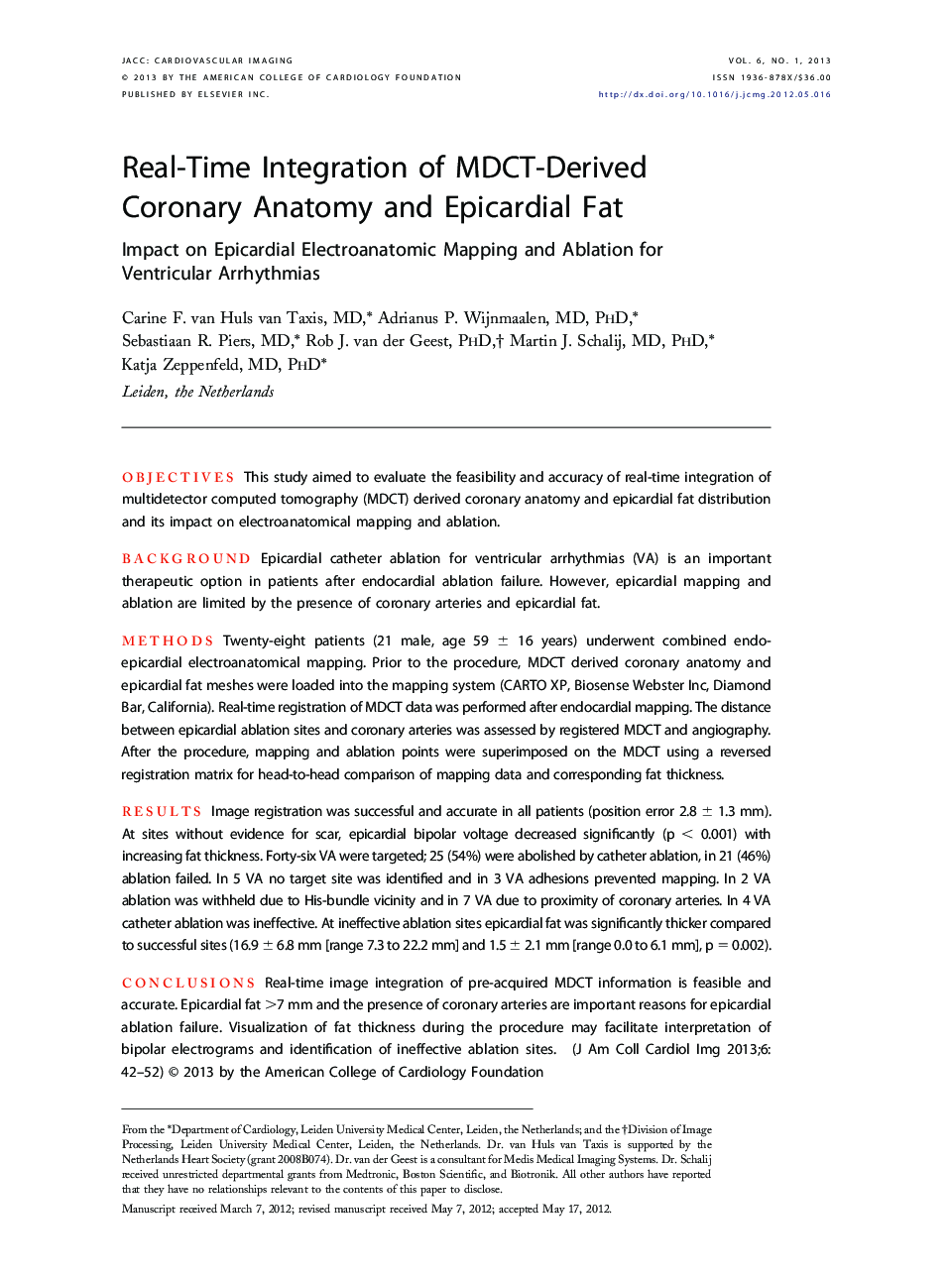| کد مقاله | کد نشریه | سال انتشار | مقاله انگلیسی | نسخه تمام متن |
|---|---|---|---|---|
| 2938084 | 1176920 | 2013 | 11 صفحه PDF | دانلود رایگان |

ObjectivesThis study aimed to evaluate the feasibility and accuracy of real-time integration of multidetector computed tomography (MDCT) derived coronary anatomy and epicardial fat distribution and its impact on electroanatomical mapping and ablation.BackgroundEpicardial catheter ablation for ventricular arrhythmias (VA) is an important therapeutic option in patients after endocardial ablation failure. However, epicardial mapping and ablation are limited by the presence of coronary arteries and epicardial fat.MethodsTwenty-eight patients (21 male, age 59 ± 16 years) underwent combined endo-epicardial electroanatomical mapping. Prior to the procedure, MDCT derived coronary anatomy and epicardial fat meshes were loaded into the mapping system (CARTO XP, Biosense Webster Inc, Diamond Bar, California). Real-time registration of MDCT data was performed after endocardial mapping. The distance between epicardial ablation sites and coronary arteries was assessed by registered MDCT and angiography. After the procedure, mapping and ablation points were superimposed on the MDCT using a reversed registration matrix for head-to-head comparison of mapping data and corresponding fat thickness.ResultsImage registration was successful and accurate in all patients (position error 2.8 ± 1.3 mm). At sites without evidence for scar, epicardial bipolar voltage decreased significantly (p < 0.001) with increasing fat thickness. Forty-six VA were targeted; 25 (54%) were abolished by catheter ablation, in 21 (46%) ablation failed. In 5 VA no target site was identified and in 3 VA adhesions prevented mapping. In 2 VA ablation was withheld due to His-bundle vicinity and in 7 VA due to proximity of coronary arteries. In 4 VA catheter ablation was ineffective. At ineffective ablation sites epicardial fat was significantly thicker compared to successful sites (16.9 ± 6.8 mm [range 7.3 to 22.2 mm] and 1.5 ± 2.1 mm [range 0.0 to 6.1 mm], p = 0.002).ConclusionsReal-time image integration of pre-acquired MDCT information is feasible and accurate. Epicardial fat >7 mm and the presence of coronary arteries are important reasons for epicardial ablation failure. Visualization of fat thickness during the procedure may facilitate interpretation of bipolar electrograms and identification of ineffective ablation sites.
Journal: JACC: Cardiovascular Imaging - Volume 6, Issue 1, January 2013, Pages 42–52